 |
SRGC Bulb Log Diary |
| Home Recommend This Site To A Friend |
|
BULB LOG 37 11th September 2003
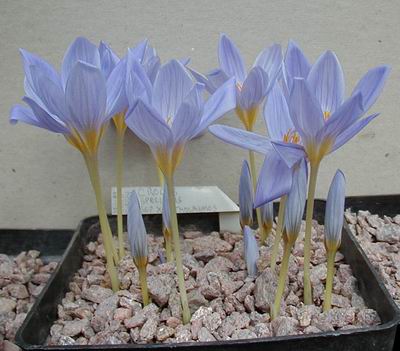
Crocus speciosus Looking down onto a plant is my least favourite view when taking photographs, as it does not tell you much about the plant. Just occasionally it is worth it for the sheer beauty that stares back up at you. 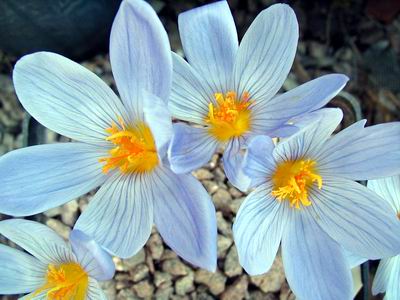
Crocus speciosus ssp xantholaimos This is the same plant of Crocus speciosus ssp xantholaimos and while this picture may not have quite the same visual impact as the first one I believe that it tells us much more about this beautiful Autumn crocus which we raised from seed collected in Turkey and distributed through the SRGC Seed Exchange. One thing this view tells us is that it produces its flowers before the leaves and this brings me to my next topic of watering your bulbs under glass. 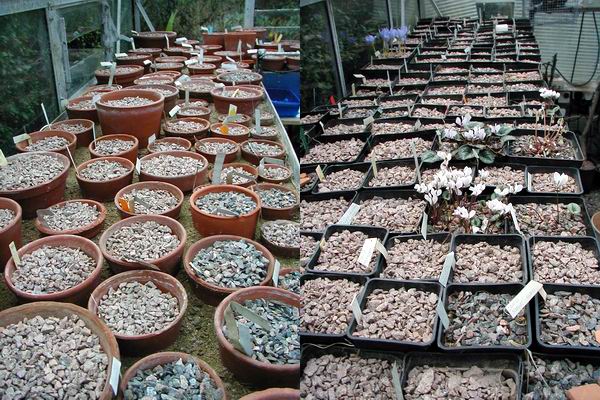
Clay & plastic Last week I described our first watering and all I do for the rest of September is make sure that they do not dry out completely. With those plunged in clay pots I just water the sand plunge if it gets dry all the way through, (this will only happen if we get a lot of warm sunny weather) do not be fooled by the surface looking dry which it often does even when the sand down below is plenty wet enough - check. It is extremely unlikely that the plastic pots will require any more watering until October if they do I will just water the sand bed that they are standing on. Watering into the pots is proportional to the amount of leaf growth showing, not flowers like the crocus above. Do not be tempted to apply additional watering to colchicum and crocus species too soon. Many flower well before they produce their first leaves and the water from the September storm should be sufficient to keep them going until October. 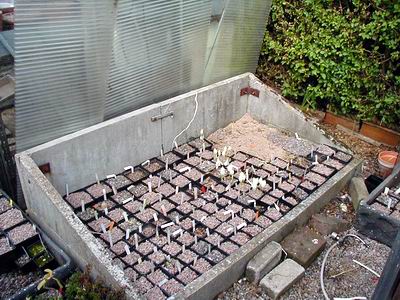
Bulb frame Normally we get sufficient rain to water the open bulb frames but because it is so dry this year I have had to water them as well. ( See Bulb Log Feed back page on the Forum section of this website for further discussion on watering bulbs). 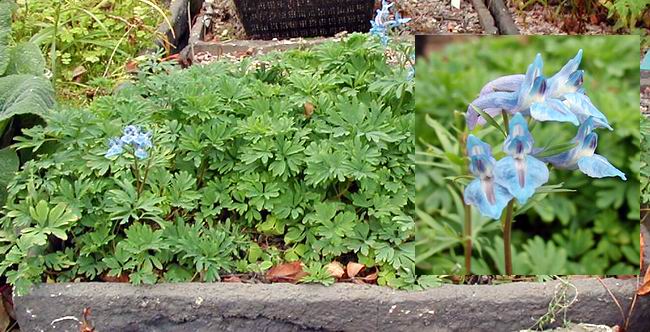
Corydalis cashmiriana Corydalis cashmiriana is one of the corydalis that dies down after flowering only to return in late summer with a new set of foliage and the occasional late flower, I do not know if this is how it behaves in the wild or if it is just what it does in cultivation. 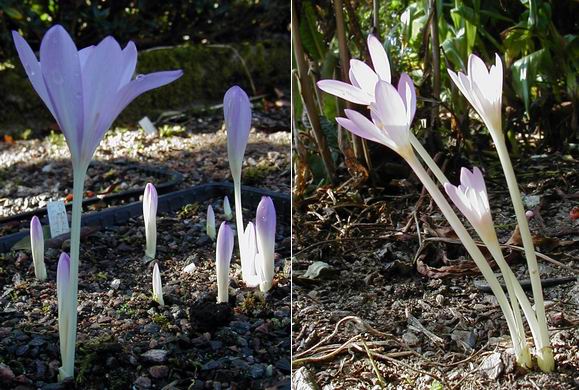
Colchicum laetum & autumnale In the garden colchicums continue to appear. It still amazes me just how quickly bulbs can go from not showing to being in full flower in the course of a day but this is what they have evolved to do, utilising that stored food source. 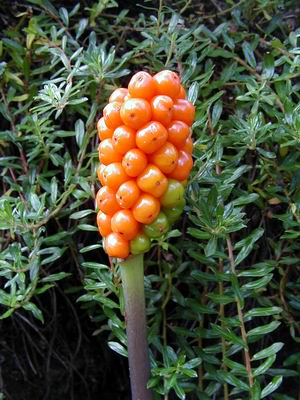
Arum italicum The seed heads on the Arums are turning a bright orange colour and it will not be very long before the attractive foliage appears, who says that bulbs have a short season? Many are in growth for nearly 12 months. 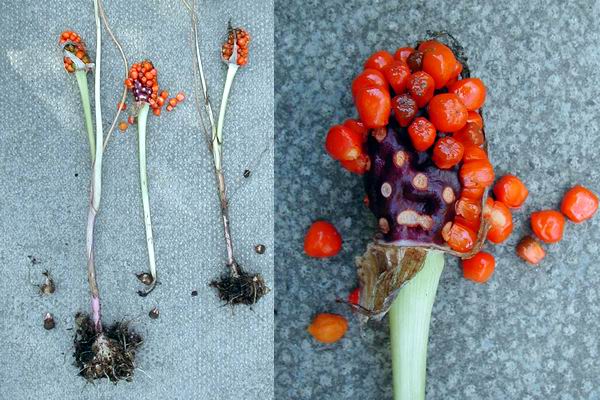
Arisaema amurense In the same family Arisaema amurense also has bright orange berries but this time they are over a purple spadex making a great colour combination. On the left are the tubers complete with fruiting stem which like a beacon guided us to a clump that we wanted to split up. If we waited until the stems had died down we would not be able to find them so easily. When this season's growth is dying back it is a good time to split many 'bulbs' and the old stems help you to locate them with minimal digging and greatly reduces the risk of damaging them with your spade. 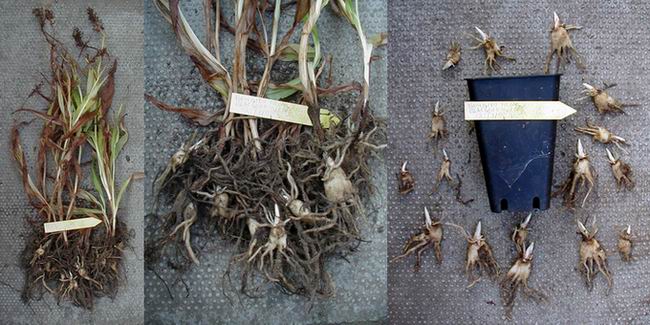
Dactylorhiza tubers Dactylorhiza are another plant that we split just now using this method to locate them. The picture shows a pot of Dactylorhiza tubers with the foliage just dying back which we split. You can see in the close up (centre) the light coloured new tubers that we twist off and pot on (right). It is always worth repotting the old tuber with the growth still attached as sometimes they will produce another new tuber before they die back completely. Like many other growers around the country we have lost a number of Dactylorhiza to fungal diseases over the last few years. The first thing that we noticed about 6 years ago was that when we tipped out a pot of tubers there was not the characteristic smell of horse that we were used to and the tubers did not have that velvety surface. I have a theory that the mycorrhizal fungi associated with orchids produced this smell and it was attacked by the disease which could then go on and invade the tubers. Things are now improving and I was very pleased when I was greeted by that horsey smell again when I tipped them out of their pots this year. 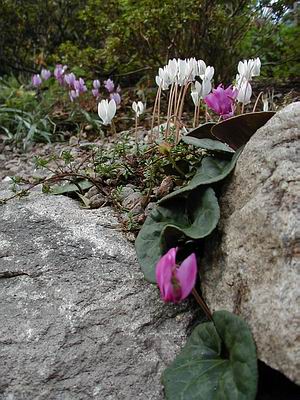
Cyclamen purpurascens More cyclamen in the garden, this is a Cyclamen purpurascens which has seeded down into the wall of a raised bed with C. hederifolium in the back ground. ^ back to the top ^ |